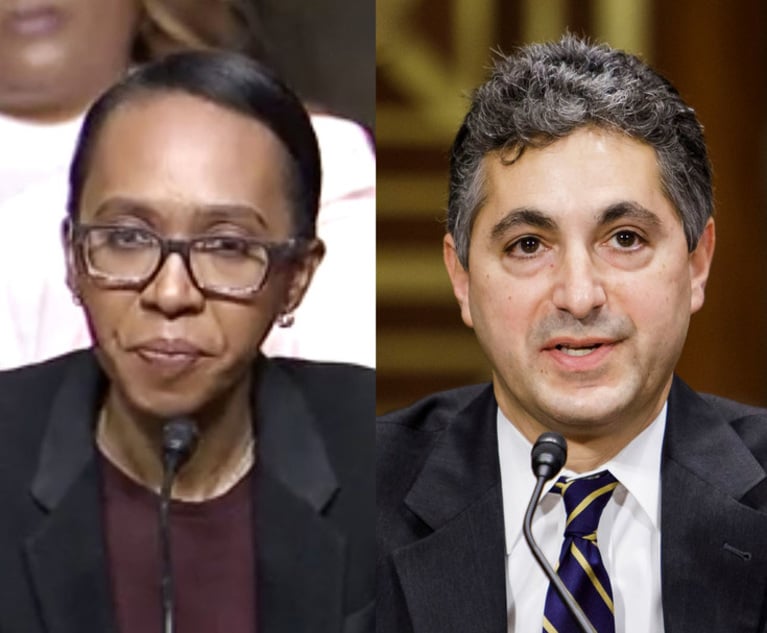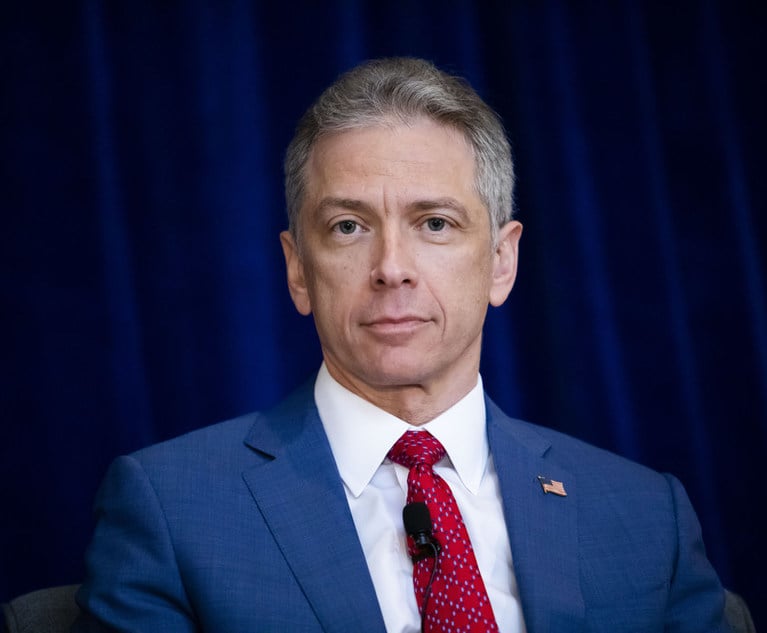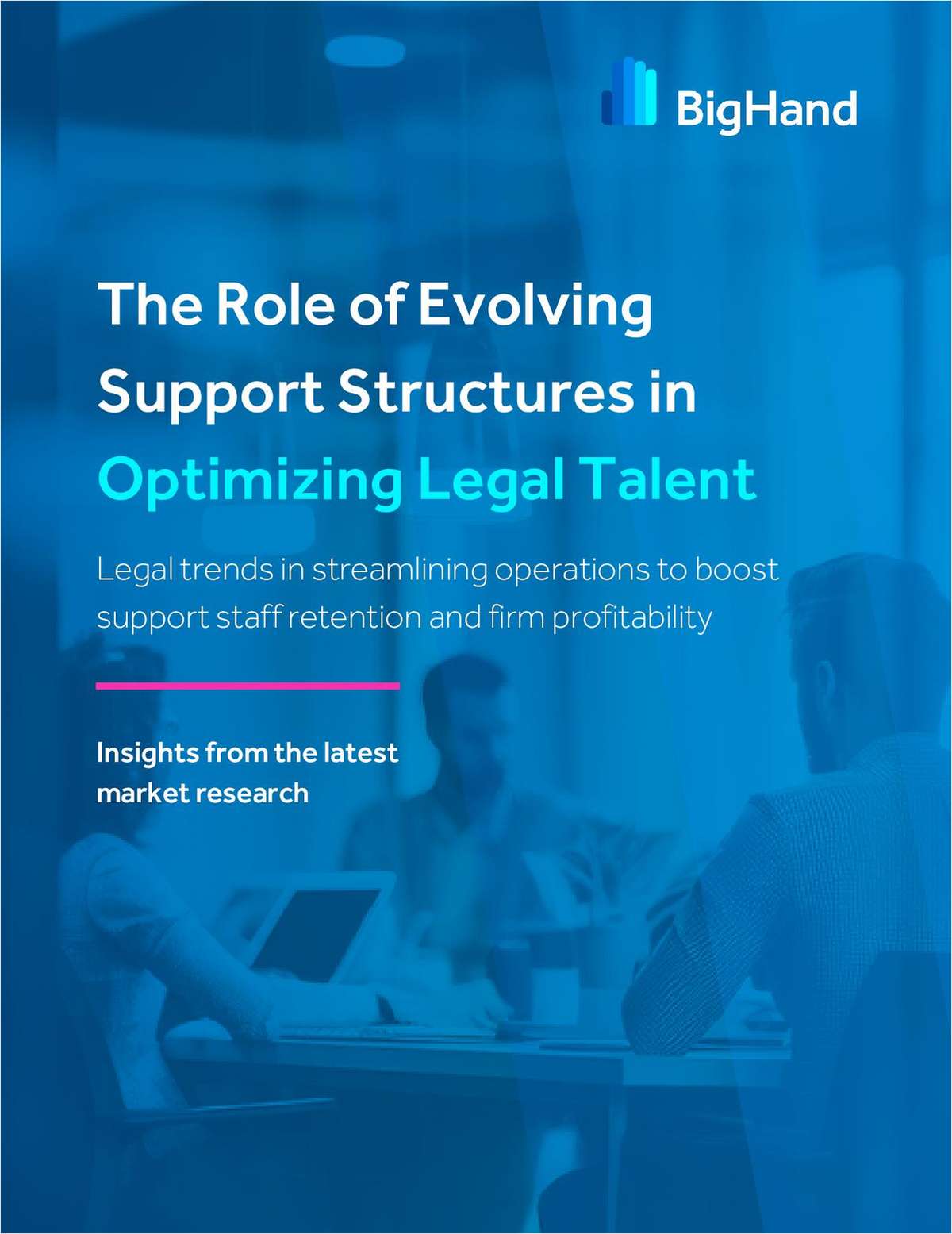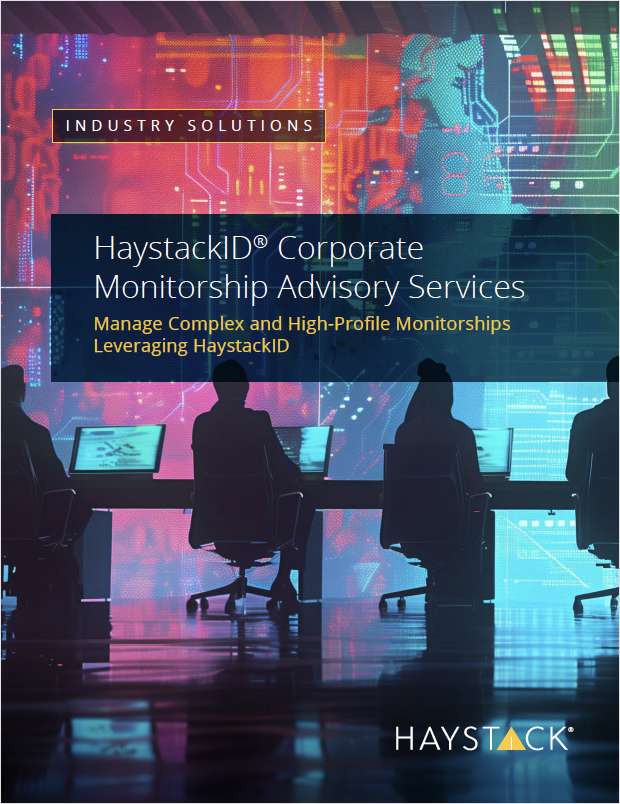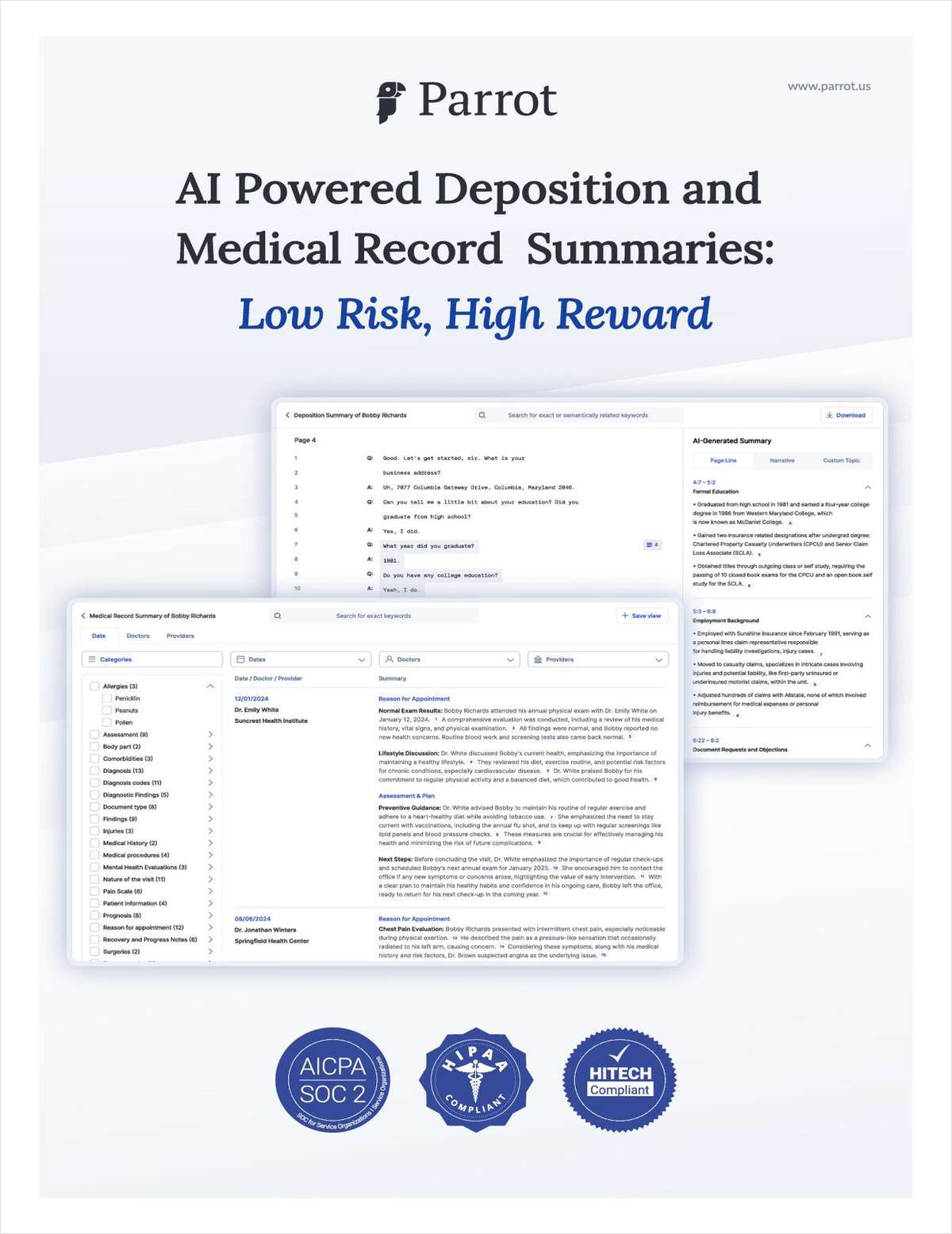Skilled in the Art: Patent Eligibility Palooza Is Under Way at the Senate + Who Got the Work in Patent Pool Dustup?
Scholars, think tankers, two former PTO directors and a former Federal Circuit chief judge testified before the Senate Judiciary's IP Subcommittee on proposed amendments to Section 101 (and 112) of the Patent Act.
June 05, 2019 at 12:00 PM
8 minute read
Welcome to Skilled in the Art. I'm Law.com IP reporter Scott Graham. Well, Day 1 of Patent Eligibility Palooza is in the books. Scholars, think tankers, two former PTO directors and a former Federal Circuit chief judge testified before the Senate Judiciary's IP Subcommittee on proposed amendments to Section 101 (and 112) of the Patent Act. The hearing just wrapped a few hours ago so I've got some real quick highlights below—and there'll be more to come as the committee leaders continue to tinker over what they're calling “a discussion draft.” Did anything in particular jump out at you? Please email me your thoughts and follow me on Twitter.
 R Street's Charles Duan, left, and Sen. Chris Coons. (Photos by Diego Radzinschi/ALM)
R Street's Charles Duan, left, and Sen. Chris Coons. (Photos by Diego Radzinschi/ALM)
Patent Eligibility Palooza Is Under Way
The Senate has lined up 45 witnesses to testify over the next week about its Section 101 proposal. “We want to know what you like, what you don't like, and what we could do better to accomplish our shared goals,” Subcommittee Chairman Thom Tillissaid Tuesday before hearing from three flights of four witnesses each. Here are highlights from the first two panels:
➤ The Myriad counterattack. Before Tuesday's hearing got under way, Washington Post health care policy reporter Paige Winfield Cunningham launched a preemptive strike with a column pointing out that the legislation would overrule a 2013 Supreme Court decision that blocked the patenting of human genes. It clearly struck a chord with subcommittee ranking member Chris Coons, who called it “significantly misleading” in his opening remarks. “Our proposal would not change the law to allow a company to patent a gene as it exists in the human body,” he declared.
R Street technology fellow Charles Duan took this ball and ran with it in his testimony. Before the Supreme Court's Myriad decision, “genes were patentable. And you would have thought patents on genes could have spurred innovations, spurred investment. In fact a lot of the companies at the time did say that that was what was going on,” Duan said. “The evidence unfortunately proved the opposite. Science was stifled.” Duan said that when he practiced patent law, “I personally saw the genius of American inventors and the value of patents to them. I also saw how patents could bully and suppress true innovators.”
➤ Former Federal Circuit Chief: Where are the en banc panels? Coons and Tillis pinned a lot of the blame for the Section 101 “mess” on the Supreme Court for developing an inscrutable test for patent eligibility. Former Federal Circuit Chief Judge Paul Michel, who's crossed swords with the Supreme Court over patent law over the years, was happy to agree. The uncertainty surrounding Section 101 is “the results of actions by courts, particularly the Supreme Court,” he said.
But he also threw some of his former colleagues under the bus too, for refusing to convene en banc panels that could clear up some of the confusion. “The Federal Circuit has refused to do that over and over, and so they've left the incoherence that they've created through these disparate and inconsistent panel rulings. Like the Supreme Court, they haven't stepped up to the task,” he said. “Congress will have to come to the rescue if it's going to be resolved.”
➤ The new PTO guidance gets (backhanded) compliments. Former PTO Directors Todd Dickinson and Dave Kappos praised the current director, Andrei Iancu, for developing new guidance for patent examiners on Section 101. But that doesn't solve the greater problem, they said. “At the end of the day, what you're looking for is investment in the patents that are being issued by the USPTO,” said Kappos, who's now a partner at Cravath, Swaine & Moore. “And while the USPTO has done a great job on its improved guidelines and maybe issuing more patents under them, that doesn't change anything about the reluctance of investors who are faced with the uncertainty about the eventual validity of those patents” in court.
Dickinson noted that about a month after the PTO published the new guidance, the Federal Circuit “issues an opinion saying, 'We see them. But we don't have to follow them.' Well, where does that leave everybody?”
That begs the question of whether guidelines would be a good model for the new legislation. That idea, which seemed to have some currency a few months ago, didn't come up much at least during the first part of Tuesday's hearing.
➤ Playing the national security card. Kappos said the uncertain state of eligibility is stifling investment in artificial intelligence, quantum computing and 5G. Patent troll lawsuits are not the issue,” he declared. “The issue is dis-incenting companies that invest in innovation, protecting our national security.” I'll mention here that 5G patent player Qualcomm is a Cravath client, since Kappos didn't.
➤ The return of “do-it-on-a-computer” patents? Coons asked UC-Hastings professor Jeffrey Lefstin to address concerns that overturning the Supreme Court case law would usher back in patents on ordinary ideas that are implemented on computers. “I have yet to see a case of that nature that would not be resolved under Section 103 or 112,” Lefstin said. Such patents are “overwhelmingly obvious” under 103 or functionally invalid under 112. Resolving cases under those statutes would cost more because they usually require going beyond the pleadings stage, “but of course the Federal Circuit has said we have to do that in 101 now as well.”
➤ Could zombie patents come back to life? Former Eli Lilly GC Bob Armitagesaid he thinks any bill should be retroactive. The bill should have “one rule that would cover all patents for all time, past present and future.”
➤ Save our software patent laws. Stanford law professor and Durie Tangri partner Mark Lemley agreed that the state of the law is “a mess. The law is uncertain. We are not always getting good results.” The medical diagnostics industry “is suffering as a result of” the Supreme Court's most recent eligibility decisions. But in the software area, “the problem of patent trolls, of nuisance lawsuits, grew to epic proportions” as recently as five years ago, “and one of the things that brought it under control in the last few years was the Alice case and Section 101.” Before throwing aside 200 years of eligibility case law, “it's very important to figure out what takes their place” so that the beneficial aspects aren't lost, he said.
➤ Are big firm lawyers out of touch? The Electronic Frontier Foundation's Alex Moss said lawyers like Kappos don't appreciate what's at stake for small businesses and startups. “It's because the people who are most vulnerable can't afford law firm lawyers, and they don't call them. They don't call Cravath. They call EFF.”
Moss also disputed the notion that eligibility law is a mess. “There are very many areas of law where courts disagree, where there are close calls,” she said.
“I'll just suggest to Ms. Moss,” Coons interjected, “there's relatively few areas of law where we have case after case where judges are calling for legislative action to fix what is an impenetrable thicket.”
Moss wasn't backing down. “If I may, those aren't the active judges of the Federal Circuit. I believe it's [Senior] Judge Plager and Judge Mayer who have articulated” these concerns, she said. And Mayer has actually called for more robust eligibility standards, she noted.
Moss was right, but only to a point. Judges Alan Lourie and Pauline Newman, who are still active members of the court, called on “a higher authority, perhaps … Congress” to straighten out Section 101 last year.
Moss also seemed to take an indirect jab at Michel, telling the senators, “I certainly would be very interested in what the current chief judge of the Federal Circuit would say if invited here.”
Who Got the Work?
Last month I wrote about Continental Automotive's suit against patent pool Avanci and several of its members over standard-essential 2G, 3G and 4G patents. Sheppard Mullin Richter & Hampton represents Continental.
We're now starting to get appearances for the defendants. An Irell & Manella team featuring partners Jason Sheasby and Annita Zhong and associate Ingrid Petersonis representing Optis UP Holdings and related entities. Alston & Bird partner Ryan Koppelman is representing Nokia entities. And Baker & McKenzie partners Colin Murray and Mark Hamer are on board for Avanci.
Continental alleges that the individual patent holders refuse to bargain with suppliers like Continental, in breach of FRAND commitments. Instead, Avanci will negotiate on their behalf only at the auto maker level in a bid to inflate royalties, Continental contends. Avanci has called the suit “meritless” and said it won't deter them from “streamlining licensing for the Internet of Things.”
That's all from Skilled in the Art this week. I'll see you all again on Friday.
This content has been archived. It is available through our partners, LexisNexis® and Bloomberg Law.
To view this content, please continue to their sites.
Not a Lexis Subscriber?
Subscribe Now
Not a Bloomberg Law Subscriber?
Subscribe Now
NOT FOR REPRINT
© 2025 ALM Global, LLC, All Rights Reserved. Request academic re-use from www.copyright.com. All other uses, submit a request to [email protected]. For more information visit Asset & Logo Licensing.
You Might Like
View All
Skilled in the Art With Scott Graham: I'm So Glad We Had This Time Together
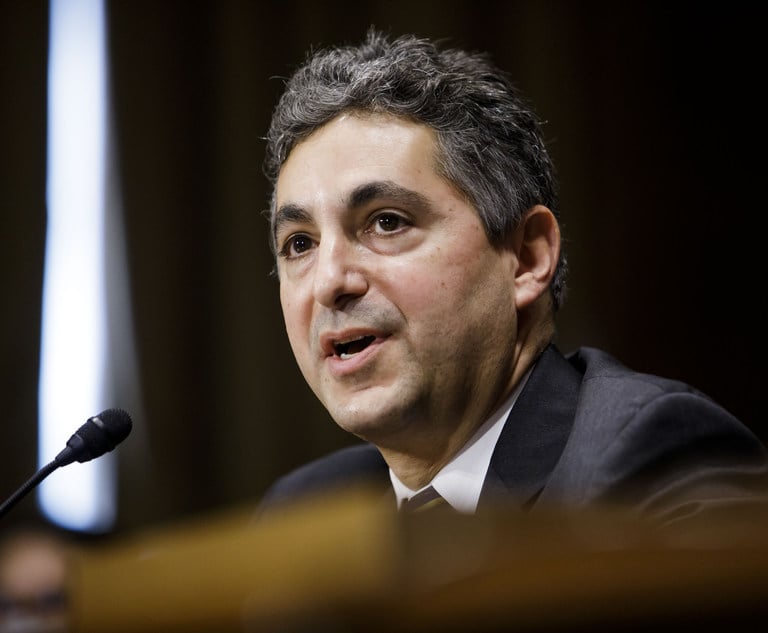
Design Patent Appeal Splinters Federal Circuit Panel + Susman Scores $163M Jury Verdict + Finnegan Protects Under Armour's House
Trending Stories
- 1Thursday Newspaper
- 2Public Notices/Calendars
- 3Judicial Ethics Opinion 24-117
- 4Rejuvenation of a Sharp Employer Non-Compete Tool: Delaware Supreme Court Reinvigorates the Employee Choice Doctrine
- 5Mastering Litigation in New York’s Commercial Division Part V, Leave It to the Experts: Expert Discovery in the New York Commercial Division
Who Got The Work
J. Brugh Lower of Gibbons has entered an appearance for industrial equipment supplier Devco Corporation in a pending trademark infringement lawsuit. The suit, accusing the defendant of selling knock-off Graco products, was filed Dec. 18 in New Jersey District Court by Rivkin Radler on behalf of Graco Inc. and Graco Minnesota. The case, assigned to U.S. District Judge Zahid N. Quraishi, is 3:24-cv-11294, Graco Inc. et al v. Devco Corporation.
Who Got The Work
Rebecca Maller-Stein and Kent A. Yalowitz of Arnold & Porter Kaye Scholer have entered their appearances for Hanaco Venture Capital and its executives, Lior Prosor and David Frankel, in a pending securities lawsuit. The action, filed on Dec. 24 in New York Southern District Court by Zell, Aron & Co. on behalf of Goldeneye Advisors, accuses the defendants of negligently and fraudulently managing the plaintiff's $1 million investment. The case, assigned to U.S. District Judge Vernon S. Broderick, is 1:24-cv-09918, Goldeneye Advisors, LLC v. Hanaco Venture Capital, Ltd. et al.
Who Got The Work
Attorneys from A&O Shearman has stepped in as defense counsel for Toronto-Dominion Bank and other defendants in a pending securities class action. The suit, filed Dec. 11 in New York Southern District Court by Bleichmar Fonti & Auld, accuses the defendants of concealing the bank's 'pervasive' deficiencies in regards to its compliance with the Bank Secrecy Act and the quality of its anti-money laundering controls. The case, assigned to U.S. District Judge Arun Subramanian, is 1:24-cv-09445, Gonzalez v. The Toronto-Dominion Bank et al.
Who Got The Work
Crown Castle International, a Pennsylvania company providing shared communications infrastructure, has turned to Luke D. Wolf of Gordon Rees Scully Mansukhani to fend off a pending breach-of-contract lawsuit. The court action, filed Nov. 25 in Michigan Eastern District Court by Hooper Hathaway PC on behalf of The Town Residences LLC, accuses Crown Castle of failing to transfer approximately $30,000 in utility payments from T-Mobile in breach of a roof-top lease and assignment agreement. The case, assigned to U.S. District Judge Susan K. Declercq, is 2:24-cv-13131, The Town Residences LLC v. T-Mobile US, Inc. et al.
Who Got The Work
Wilfred P. Coronato and Daniel M. Schwartz of McCarter & English have stepped in as defense counsel to Electrolux Home Products Inc. in a pending product liability lawsuit. The court action, filed Nov. 26 in New York Eastern District Court by Poulos Lopiccolo PC and Nagel Rice LLP on behalf of David Stern, alleges that the defendant's refrigerators’ drawers and shelving repeatedly break and fall apart within months after purchase. The case, assigned to U.S. District Judge Joan M. Azrack, is 2:24-cv-08204, Stern v. Electrolux Home Products, Inc.
Featured Firms
Law Offices of Gary Martin Hays & Associates, P.C.
(470) 294-1674
Law Offices of Mark E. Salomone
(857) 444-6468
Smith & Hassler
(713) 739-1250



